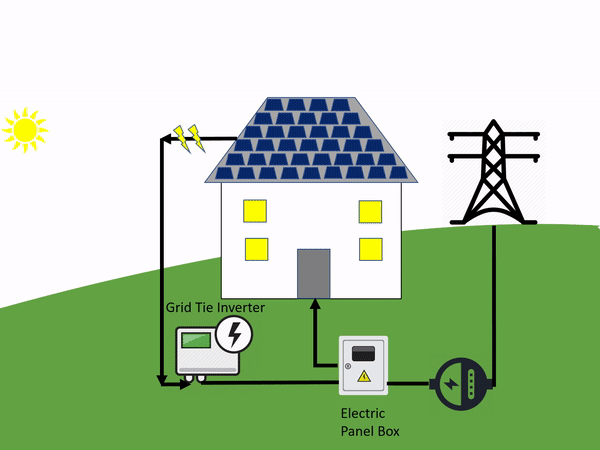The potential for solar energy is enormous, since about 200,000 times the world’s total daily electric-generating capacity is received by Earth every day in the form of solar energy. Solar radiation can be converted either into thermal energy (heat) or into electrical energy, though the former is easier to accomplish.
 Renewable Energy Source
Renewable Energy Source
Since you will be meeting some of your energy needs with the electricity your solar system has generated, your energy bills will drop. How much you save on your bill will be dependent on the size of the solar system and your electricity usage.
 Reduces Electricity Bills
Reduces Electricity Bills
Every renewable energy project starts with an in-depth analysis of energy needs and possible energy sources available to create a sustainable energy solution. Technology Links measures and records existing loads to determine the feasibility of your project, including customer input.
 Low Maintenance Costs
Low Maintenance Costs
Solar energy systems generally don’t require a lot of maintenance. You only need to keep them relatively clean, Most reliable solar panel manufacturers offer 20-25 years warranty. Also, as there are no moving parts, there is no wear and tear. The inverter is usually the only part that needs to be changed after 5-10 years because it is continuously working to convert solar energy into electricity and heat (solar PV vs. solar thermal) .
At a high level, there are three types of solar power system:
 On-grid solar.
On-grid solar. Off-grid solar.
Off-grid solar. Hybrid solar...
Hybrid solar...On-Grid Solar:
Definition: On-Grid Systems are solar pv systems that only generate power when the utility power grid is available. They must connect to the grid to function. They can send excess power generated back to the grid when you are overproducing so you credit it for later use.
Benefits: These are simplest systems and the most cost effective to install. These systems will pay for themselves by offsetting utility bills in 4-6 years..
Downside: These do not provide power during a grid outage

At a high level, there are three types of solar power system:
Definition:On-Grid Systems are solar pv systems that only generate power when the utility power grid is available. They must connect to the grid to function. They can send excess power generated back to the grid when you are overproducing so you credit it for later use.
Downside: Provides power for your critical loads when the power grid is down.
Downside: : Cannot be expected to provide power for all your loads since the cost and volume of batteries would be prohibitive. Off-Grid systems require a lot more specialized equipment to function that is more costly and more complex to install. Specifically they require a central/string inverter, a charge controller as well as a batteries..

To overcome these problems we are introducing our solar water pumping system at a very affordable cost with high reliability. Solar water pumps are specially designed to lift water for irrigation, horticulture farms, gardens, domestic use, drinking and other similar applications. These systems are best alternatives for areas where there is no electricity or scarcity of power supply. The specially designed modules of the system can withstand extreme weather conditions such as storm, rain and dust and are impact resistant.
